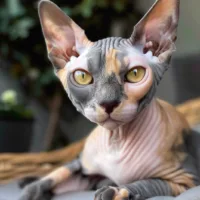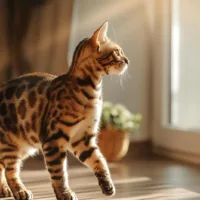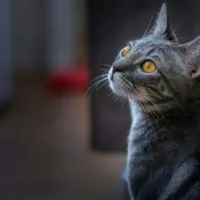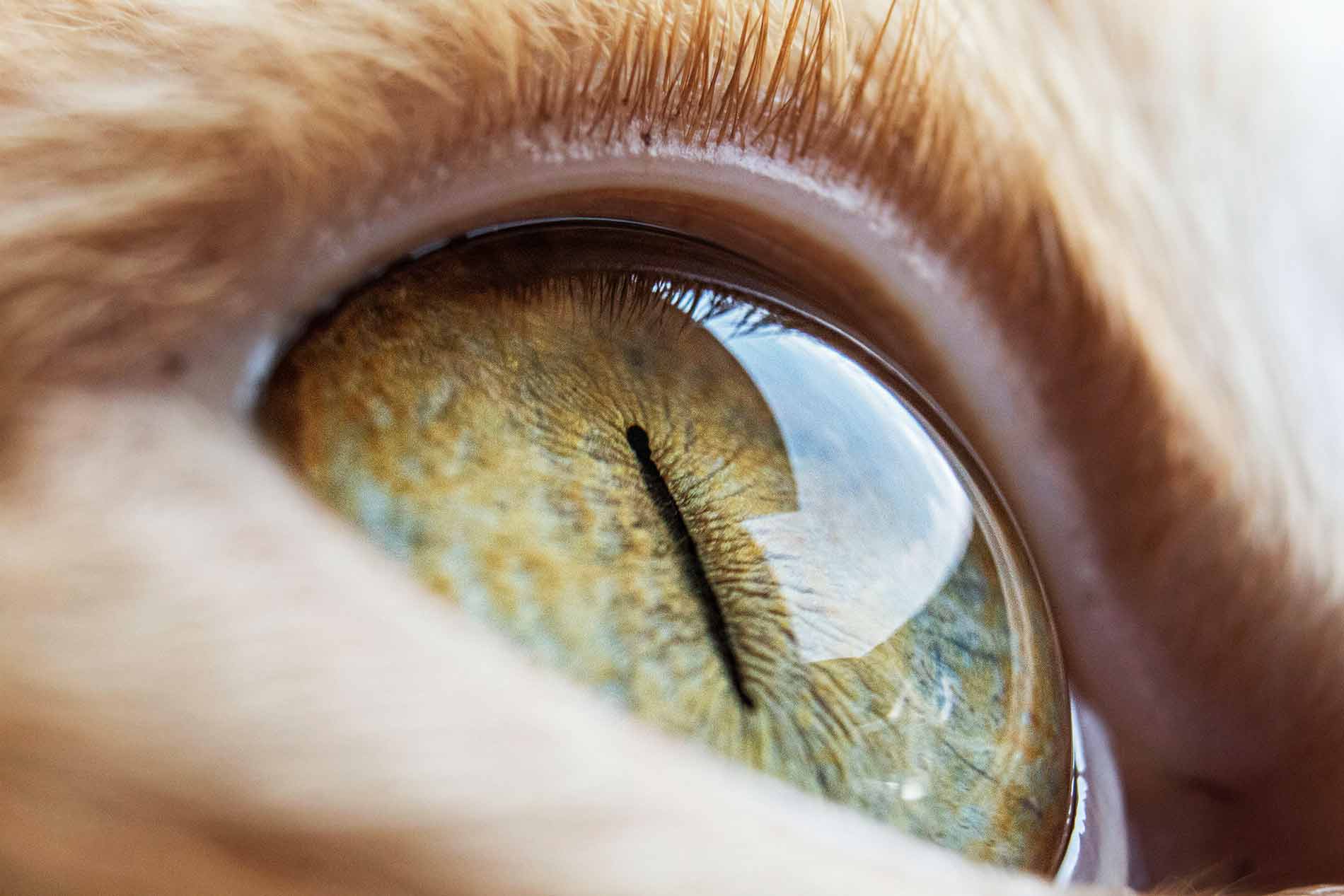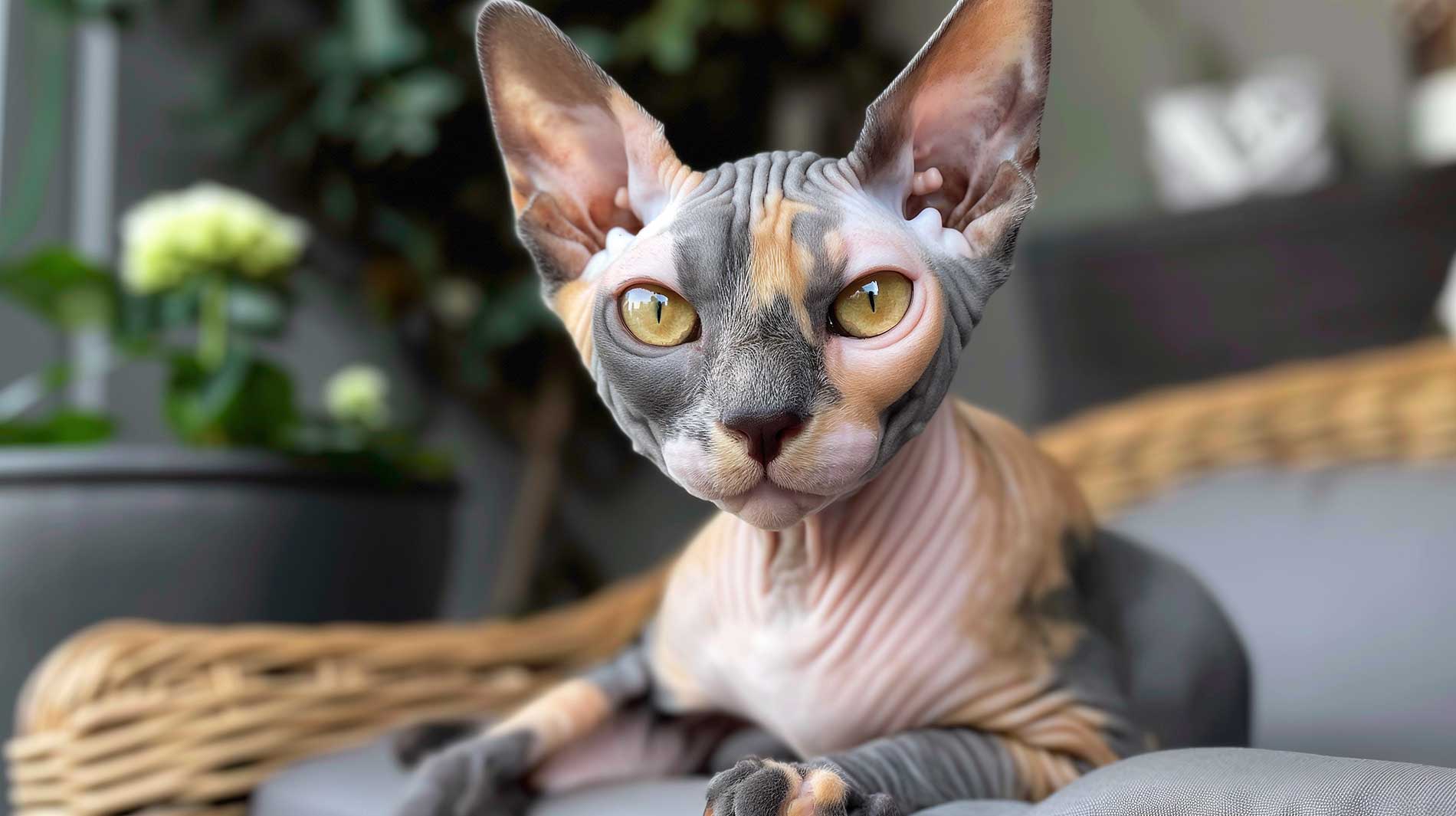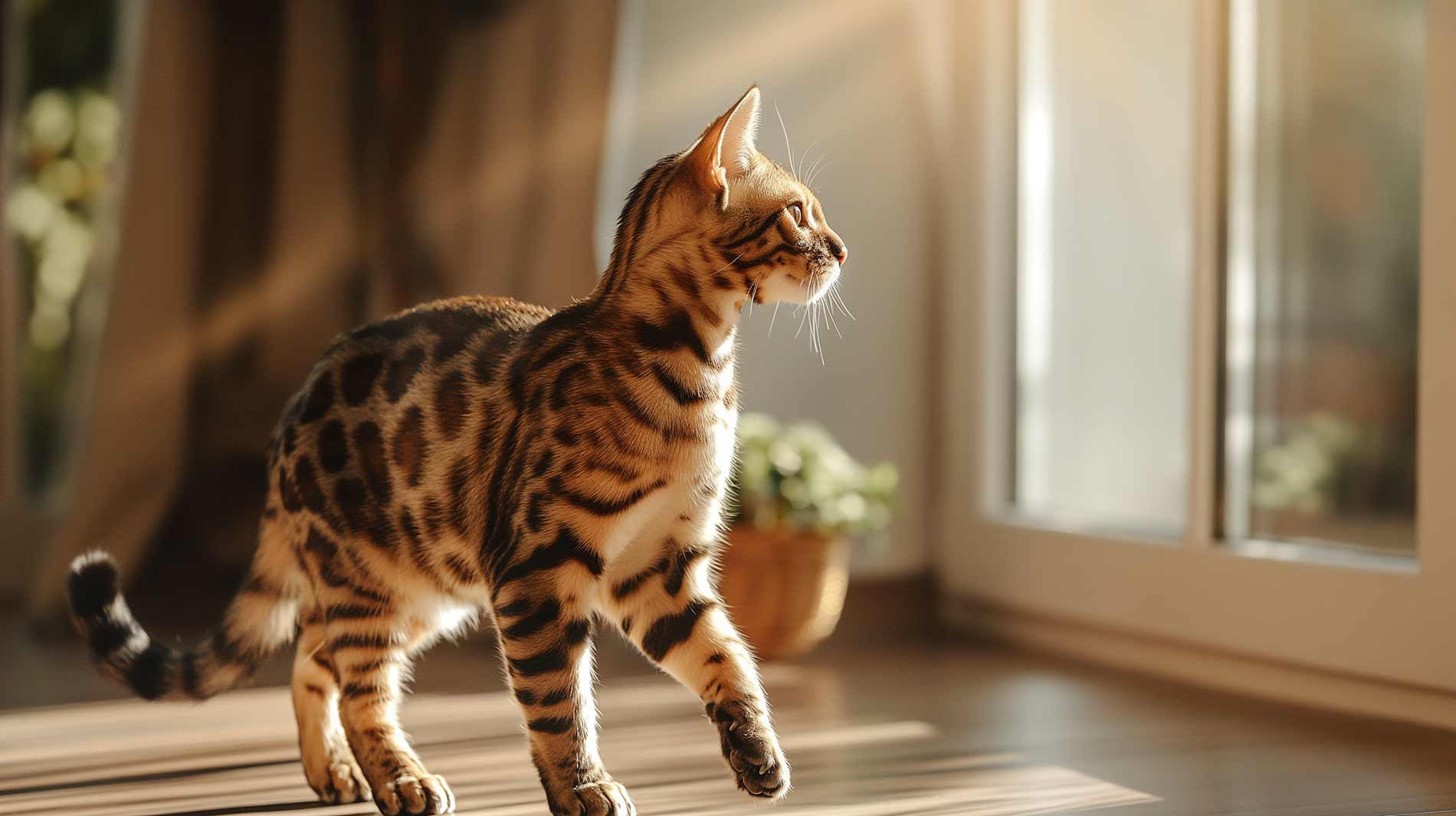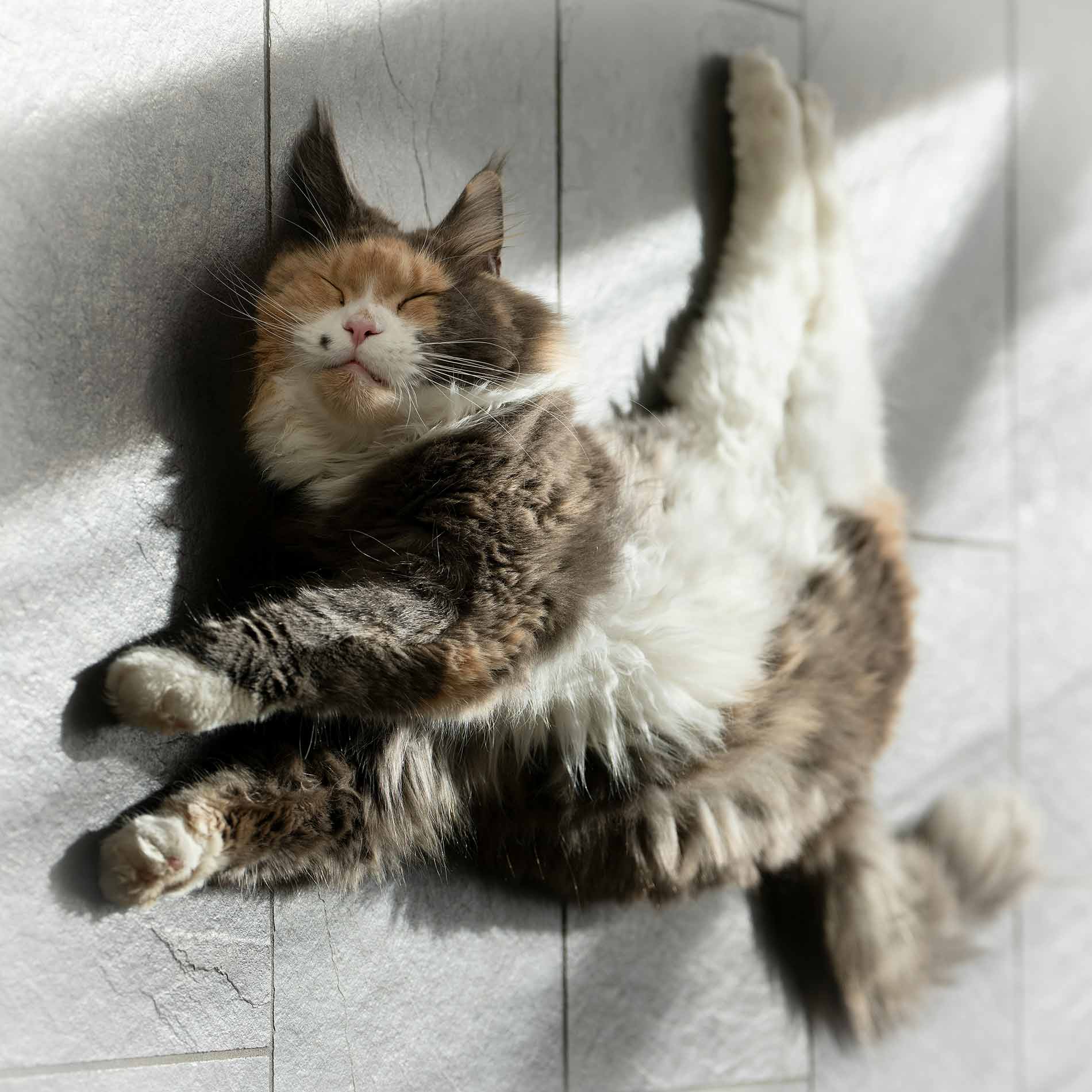Unlike our relatively straightforward human eyes, cat eyes are marvels of evolutionary design, allowing them to see in near-darkness. To understand how they work, it’s helpful to start by considering the familiar anatomy of human eyes – featuring the cornea, lens, retina, iris, and pupil – and compare how cats’ eyes are different and uniquely suited to their needs.
Overview of cat eyes
Basic parts
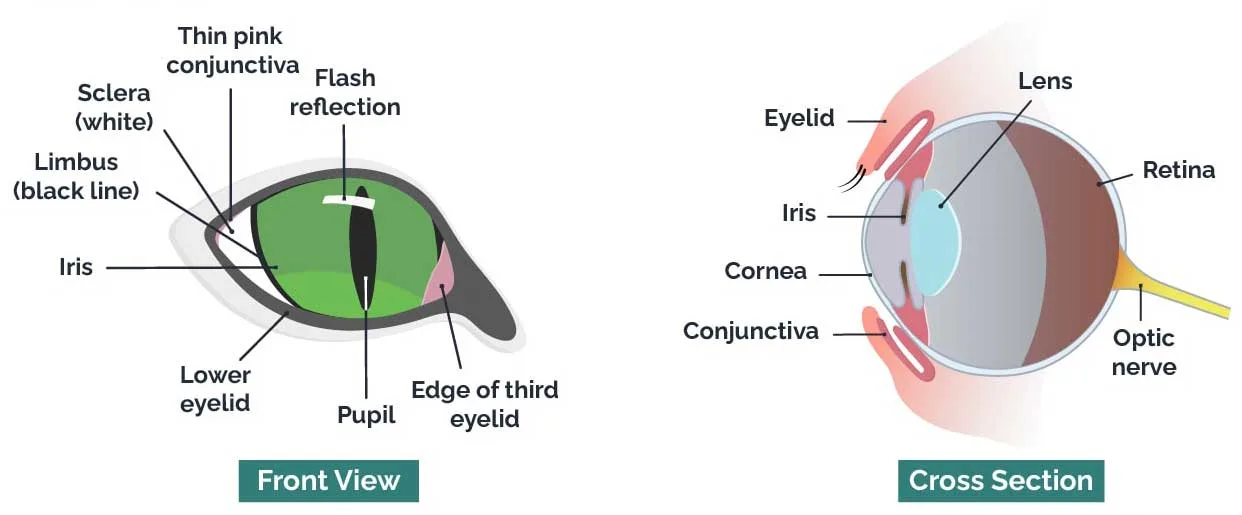
The basic components of a cat’s eye are much like ours:
- Cornea: The clear, protective outer layer that helps focus incoming light.
- Lens: Adjusts focus, allowing the eye to see details at different distances.
- Retina: It forms images at its light-sensitive layer at the back of the eye.
- Iris: The colored part of the eye that controls the size of the pupil.
- Pupil: The opening that regulates the amount of light that enters the eye.
However, the magic happens in the layers of the eye, particularly the retina, where specialized cells called rods and cones reside. Cats have a remarkably high rod-to-cone ratio, enabling them to see in low light but with less color detail compared to humans.1
Unique features that set cat eyes apart
1. Slit pupils
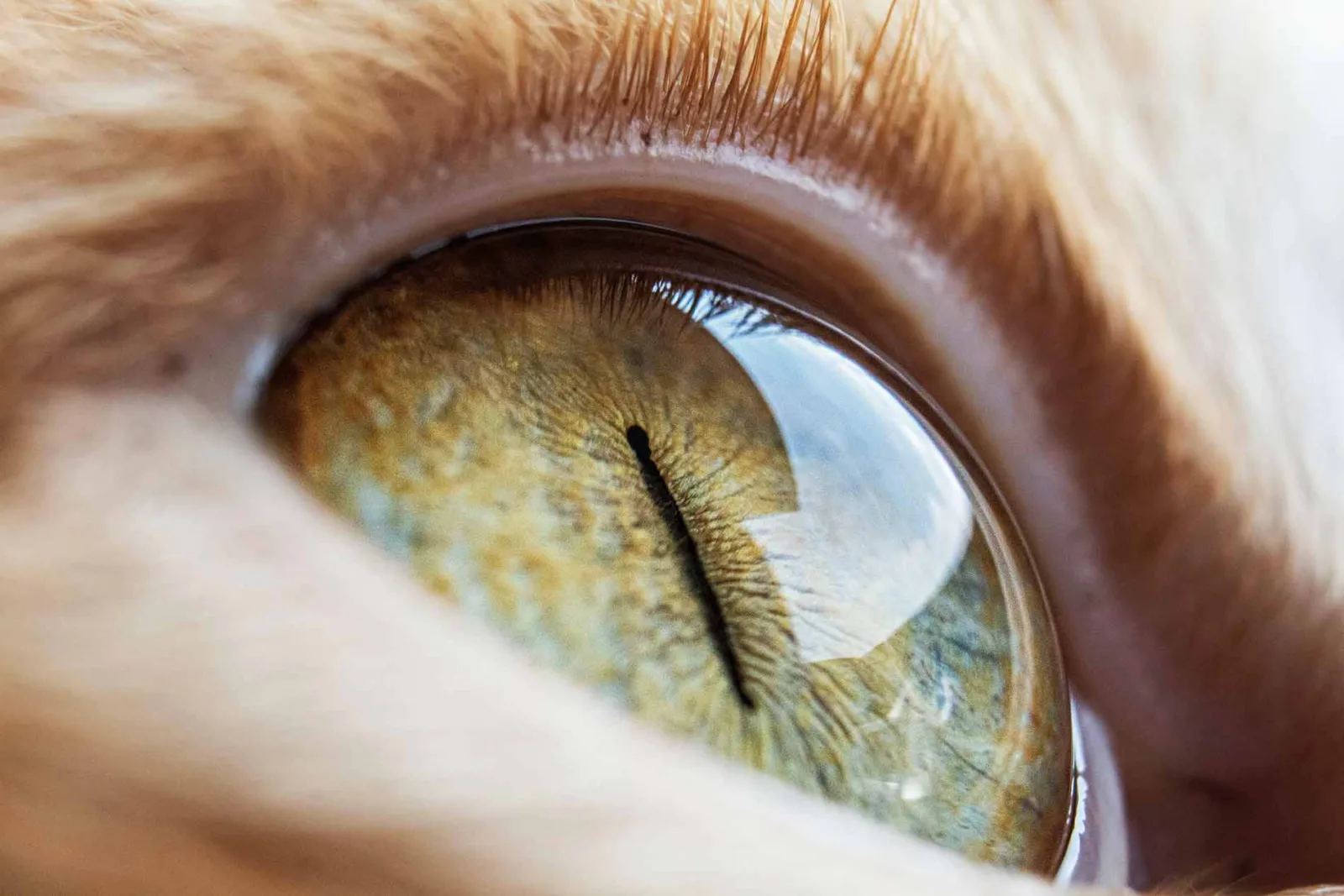
One of the most striking features of cat eyes is their slit-shaped pupils, which can expand dramatically in low light or contract to a thin slit in brightness. This ability provides a crucial adaptive advantage by precisely controlling light intake, enhancing their vision in various lighting conditions. In contrast, big cats like lions, which are not strictly nocturnal, tend to have round pupils similar to humans.2,3
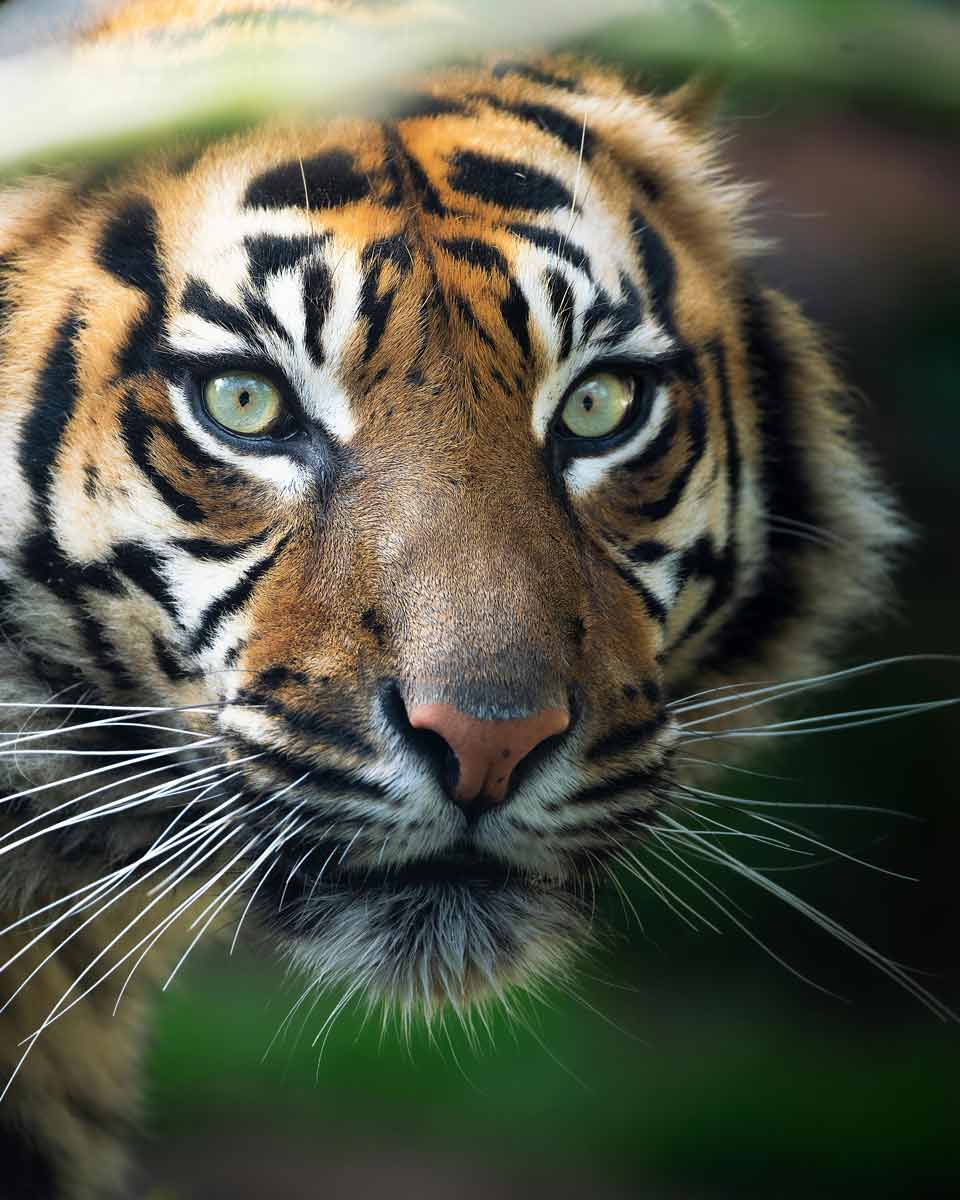
A surprising thing we noticed from this study is that the slit pupils were linked to predators that were close to the ground. So domestic cats have vertical slits, but bigger cats, like tigers and lions, don’t. Their pupils are round, like humans and dogs.
Dr William Sprague from the University of California, Berkeley
2. Tapetum lucidum
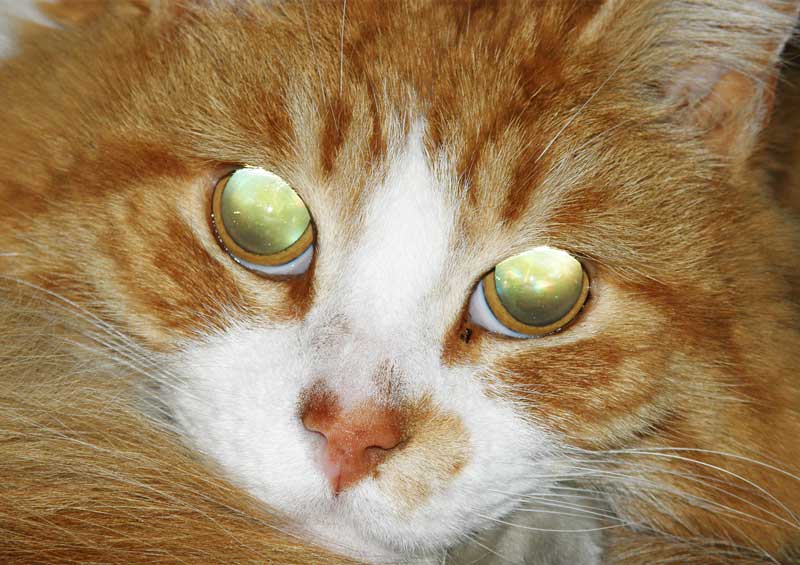
Behind the retina lies the tapetum lucidum, a layer of tissue that reflects light back through the retina, effectively doubling the light available to the cat’s photoreceptors. This is what gives cat eyes their characteristic glow in the dark and significantly boosts their night vision. The interplay between the tapetum lucidum and pupil dilation is a key factor in their ability to see in the dark.2
3. Color vision
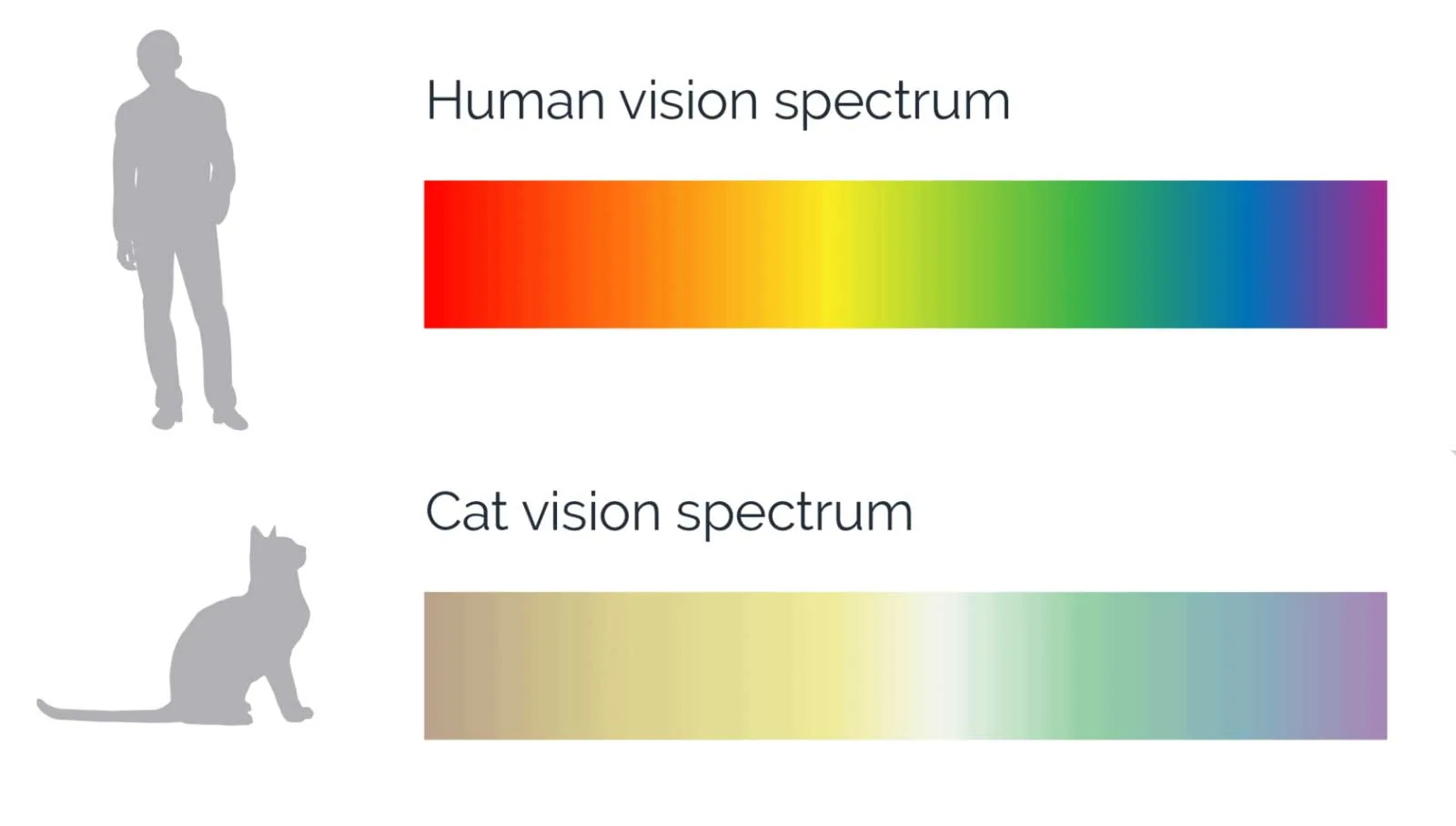
Contrary to the common myth, cats do not see in mere black and white. Instead, their color vision is just limited compared to humans’. They can see shades of blue and green, but reds and pinks may appear more greenish, and purple can look like another shade of blue. This vision setup is perfectly tailored for hunting in dim light or at night.4
4. Field of view and depth perception
Cats have a wider field of view – about 200 degrees, compared to humans’ 180 degrees – allowing them to detect slight movements across a broad area, which is crucial for spotting prey. Their binocular vision and depth perception are finely tuned for calculating distances in hunting scenarios.1,3
5. Major iridal vessels
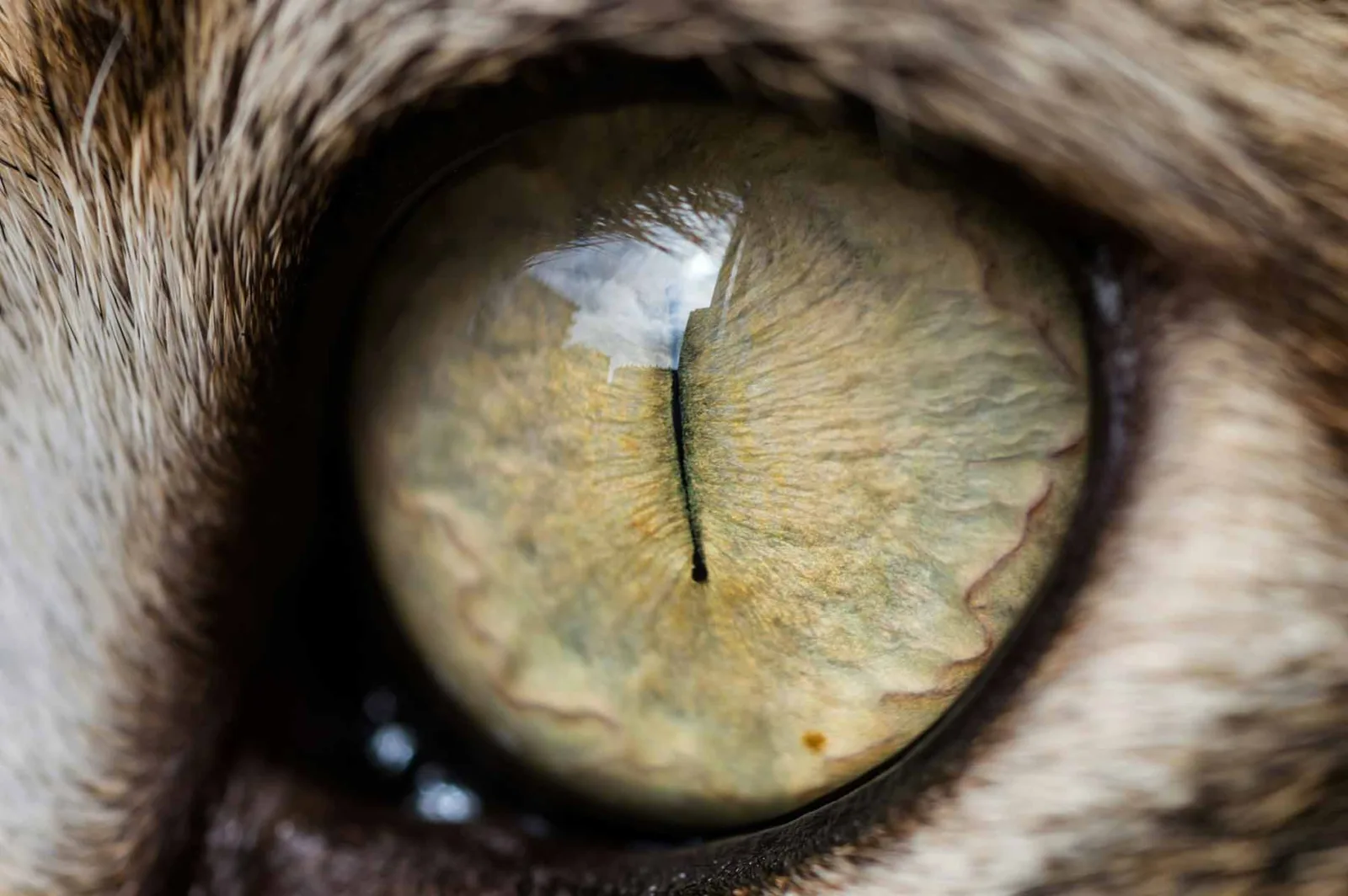
If you’ve ever noticed a prominent vein on the outer edge of a cat’s iris, that’s the major iridal vessel. It’s essential for delivering nutrients and oxygen to the eye’s components, highlighting the eye’s complex vascular system that supports intense physiological functions.
6. Evolutionary adaptations
Cats’ eyes have evolved not just for nocturnal hunting but for peak performance during dusk and dawn, when many of their prey are active. The evolutionary design of their eyes shares similarities with other nocturnal creatures, yet it is finely honed to their particular predatory habits and environmental interactions.3
Cat eyes are mesmerizing to look at and are complex optical systems evolved to support survival through superb night vision, a wide field of view, and sharp depth perception. Next time a cat gives you the look, remember you’re peering into a sophisticated biological phenomenon honed by millions of years of evolution. It’s just another reason to be fascinated by our most favorite creatures in the world.
If you want to know more about cats’ anatomy, check out our overview. And definitely let us know in the comments what you would love to know about the anatomy of cats!
